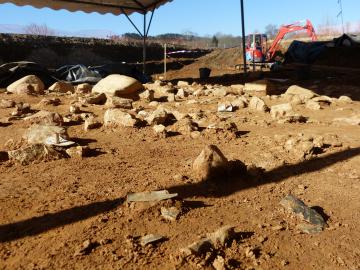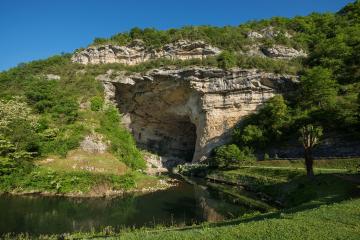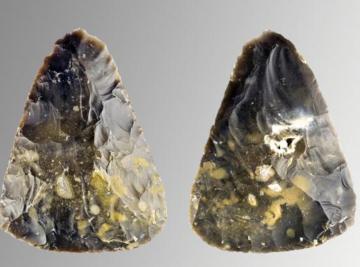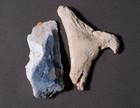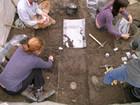You are here
News
- (-) Remove Paleolithic filter Paleolithic
- (-) Remove Discoveries filter Discoveries
Since November 2011, a team of Inrap archaeologists has been excavating a large Solutrean site in Boulazac (Dordogne), near Périgueux. This work, which is curated by the State (Drac, Aquitaine), is taking place in advance of the construction of a waste management and recovery center by the Sita society, a subsidiary of Suez Environment.
An Inrap team has intervened, under the curation of the State (Drac Midi-Pyrénées), in the monumental cave-tunnel of Mas d’Azil (Ariège Department) in the context of a touristic development project.
Vincent Mourre, préhistorien à l'Inrap publie avec Paola Villa et Christopher S. Henshilwood, une découverte capitale sur le site de Blombos (Afrique du Sud) dans la revue Science.
A team of a archaeologists from Inrap (The National Institute for Preventive Archaeological Research) is at present excavating, curated by the State (Regional Archaeological Service - DRAC - Haute-Normandie), a prehistoric and paleontological site over 200,000 years old at Tourville-la-Rivière, Seine Maritime.
Numerous Neanderthal artifacts are currently being excavated by a team from the Inrap at Saint-Amand-les-Eaux (Nord). The excavation, taking place, in advance of the construction of a shopping centre, is curated by the Regional Archaeology Service, (DRAC Nord-Pas-de-Calais). An exceptionally well preserved human occupation around 50,000 years old has been found.
In the Somme region, a joint team of CNRS and Inrap archaeologists have discovered a site fundamental for our understanding of the history of Neanderthals.
In advance of work on line N° 2 of the Montpellier tramway, an excavation, curated by the Regional Archaeology Service, was carried out at Fontaine de Pila street by archaeologists from INRAP and the Centre National de Recherche Scientifique (CNRS). Together, they discovered the oldest traces of human occupation in Montpellier, dating back to well before the creation of the city!


